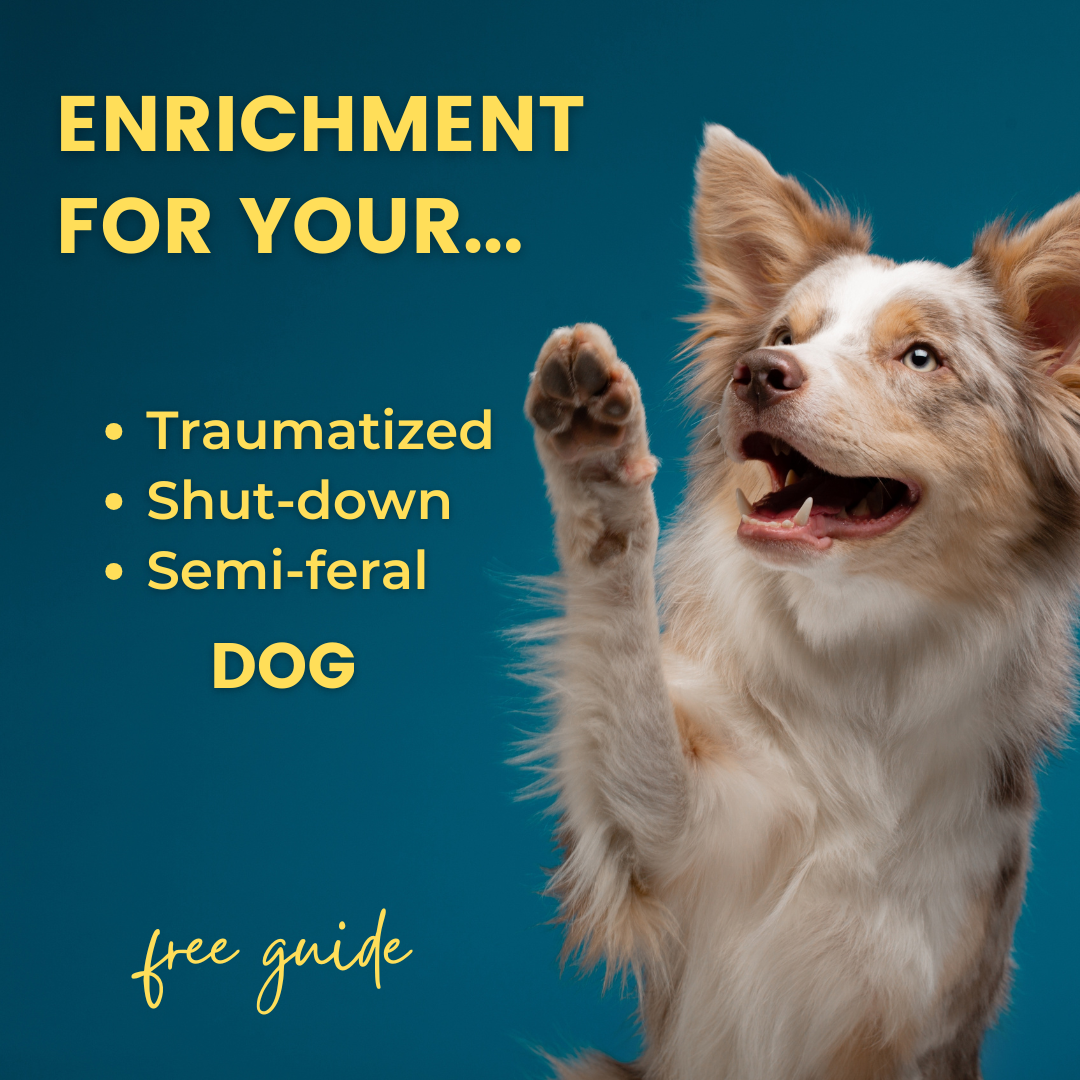Nail Board Training Part 2: More Scratching
Nov 29, 2021
This week's video is for you if you've just started training your dog to use a nail board. If you haven't already started this training, check out last week's blog. In this week's video, I continue our nail care series with more advanced nail board training. Here are some of the highlights:
How Do I Get More Than One Scratch?
A nail boards works most efficiently when the dog can scratch it multiple times in a row. There are a few ways you can encourage your dog to get scratching:
- Prompt digging: As I discussed last week, you can hold a treat under your hand or a towel to prompt your dog to "dig" to get the treat. Reward with treats after the dog makes multiple paw movements across the board.
- Repeat your cue: If you can cue a single scratch on the board, just cue one scratch at a time twice in a row. Instead of rewarding both scratches, only reward the second one.
- Cue once and wait: Alternatively, you can cue once and wait until the dog scratches twice. If you have rewarded single scratches often enough, most dogs will try again when their last scratch wasn't rewarded.
Note: For many dogs, moving from one scratch at a time, to two or more scratches, is a significant increase in difficulty. You should still reward single scratches at least occasionally at this stage, but should reward multiple scratches more often.
Increasing the Number of Scratches Per Treat
If your dog can reliably do two scratches in a row, you're ready to start asking for 3, 4, or even more scratches per treat. Here are some ways to keep increasing the scratch count:
- Keep doing what already worked: Whether you used a digging prompt, repeated and faded out your cue, or cued once and waited for two scratches, these strategies can work again. Reward your dog for 3 or more scratches instead of 2, using your method of choice.
- Better rewards for more scratches: Reward your dog with better treats, more treats, or reward more often for a larger number of scratches.
- Fewer rewards for fewer scratches: Reward your dog less frequently for sets of 1 or 2 scratches. Make sure to reward much more frequently for larger numbers of scratches to encourage more frequent sets of multiple scratches.
How Do I Get My Dog To Scratch Harder?
Scratches can vary in length and pressure on the board. Here are some suggestions for shaping scratches that are heavy and long enough to effectively file nails:
- Decide what you need to change: Are you looking for longer scratches that cover more of the board? Or do you want your dog to press their nails harder against the board? Maybe both? Decide what you want so you know what to look for and reinforce.
- Experiment with the board set-up: Your dog's scratches on the nail board might vary based on the angle of the board, and your dog's position. Experiment with different options to see if any changes to the training setup produce changes in your dog's scratching behavior that are favorable. See examples in the video.
- Reinforce the best scratches heavily: You'll notice variation in the length and pressure of you dog's scratches during training sessions. Reward the "best" scratches with extra treats or higher value treats to help increase the frequency of those exceptional scratches.
How Can I Train My Dog To Scratch With Both Paws?
Many dogs have a "dominant" paw, and are much more likely to scratch the nail board with that paw, vs. their other front paw. Here are some strategies for getting your pup to scratch with their "off paw":
- Wait it out: If your dog seems "stuck" on one paw, one option is to just wait and withhold treats for several seconds. Many dogs will try something different, like scratching with the other paw, when scratches with the preferred paw don't produce treats. Once you have some scratching with the less favored paw, make sure to reinforce those scratches at a higher rate than scratches with the dominant paw.
- Move the board or the dog: Use treats to position your dog where they might choose to scratch with the less-favored paw. This can also be done with creative positioning of the board.
I hope this week's video is helpful as you continue your work with the nail board. Next week, we'll look at nail filing as we continue our series on nail care.
If you're looking for more one-on-one guidance with your fearful dog, check out our online training membership, the Reactive Dog Academy. For a more personalized plan, sign up for private training.
If you are getting started with nail board training, we want to hear about your successes or struggles. Join our Facebook group and post your questions or comments there, or email us at [email protected].



